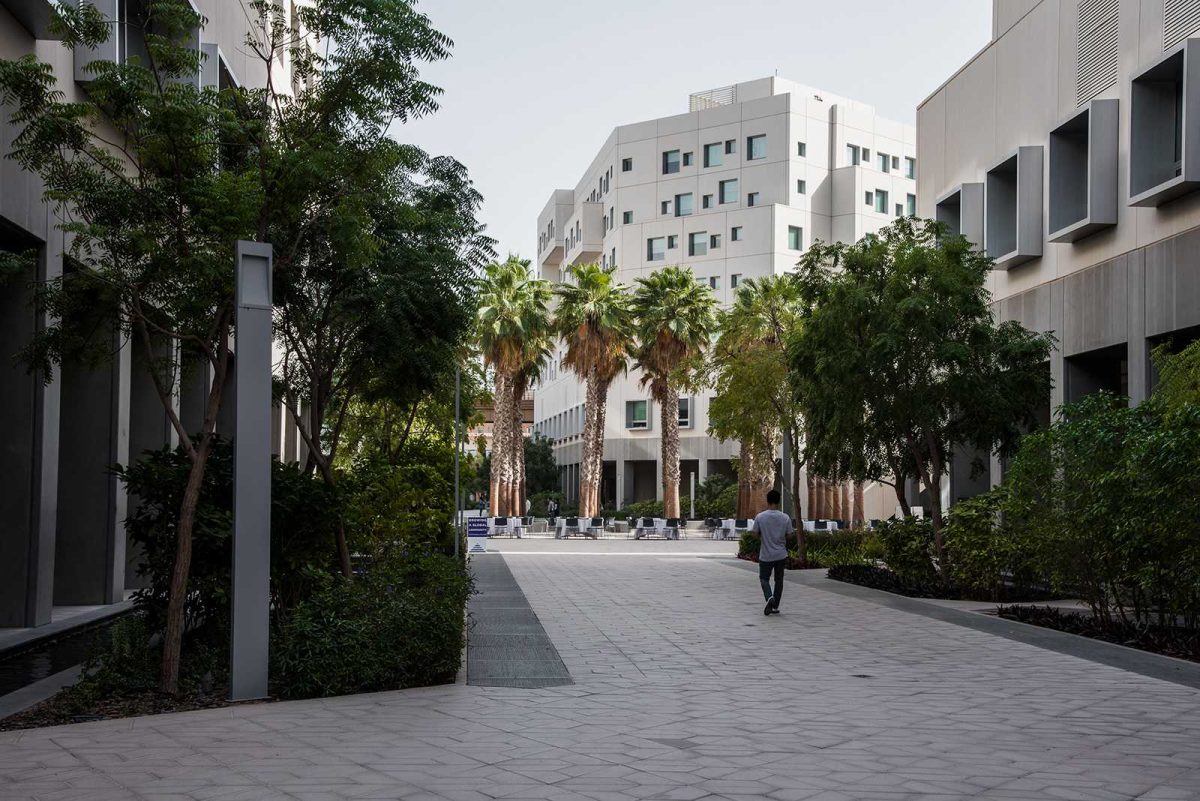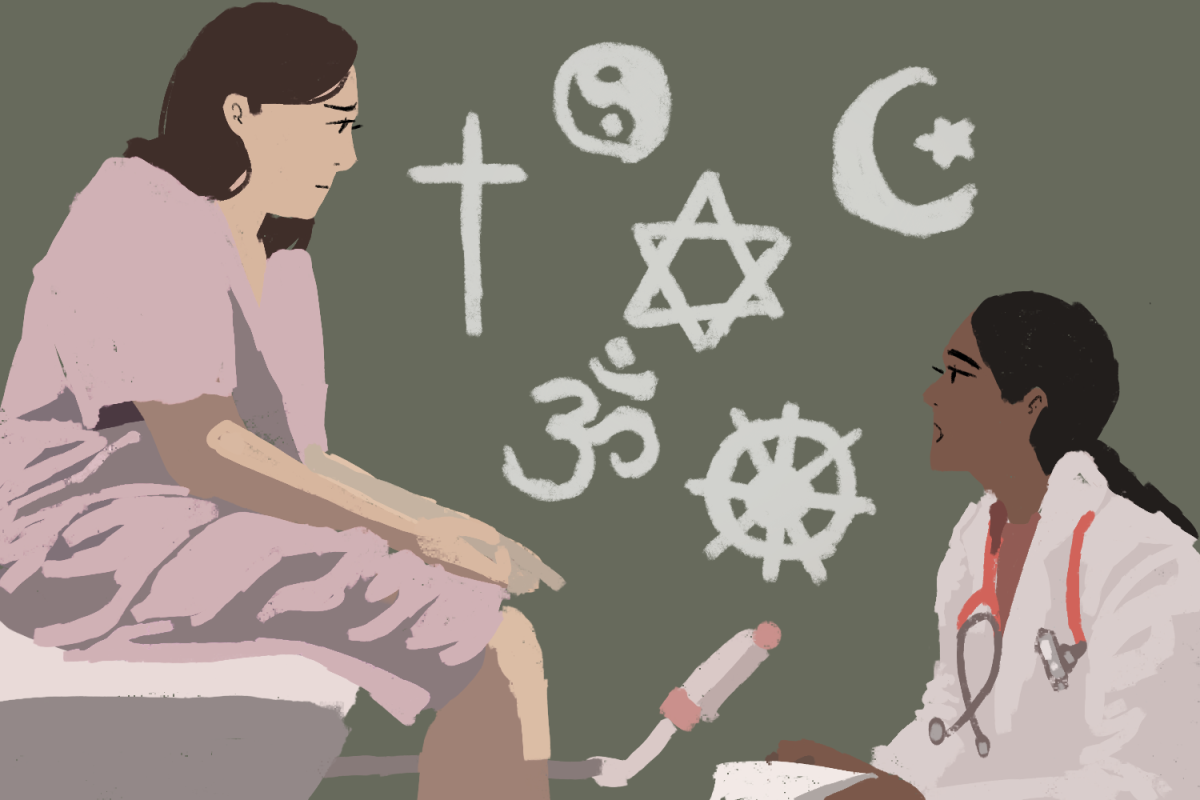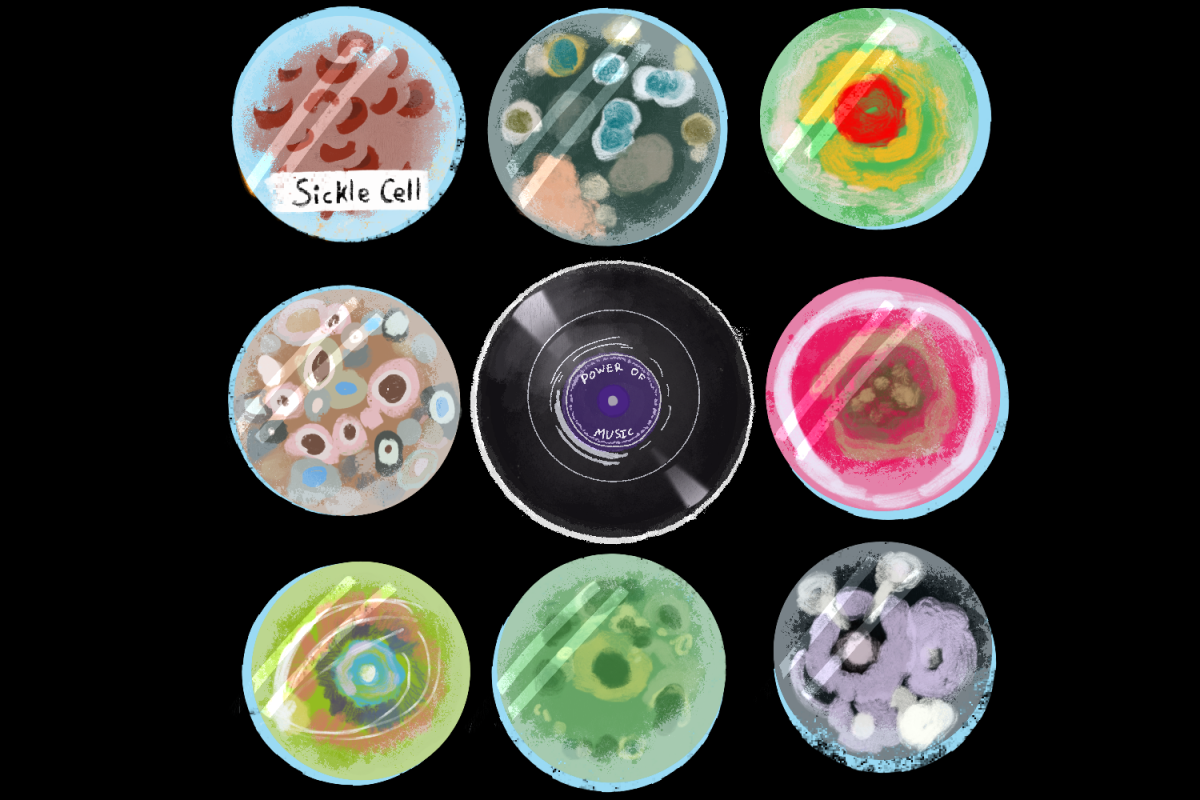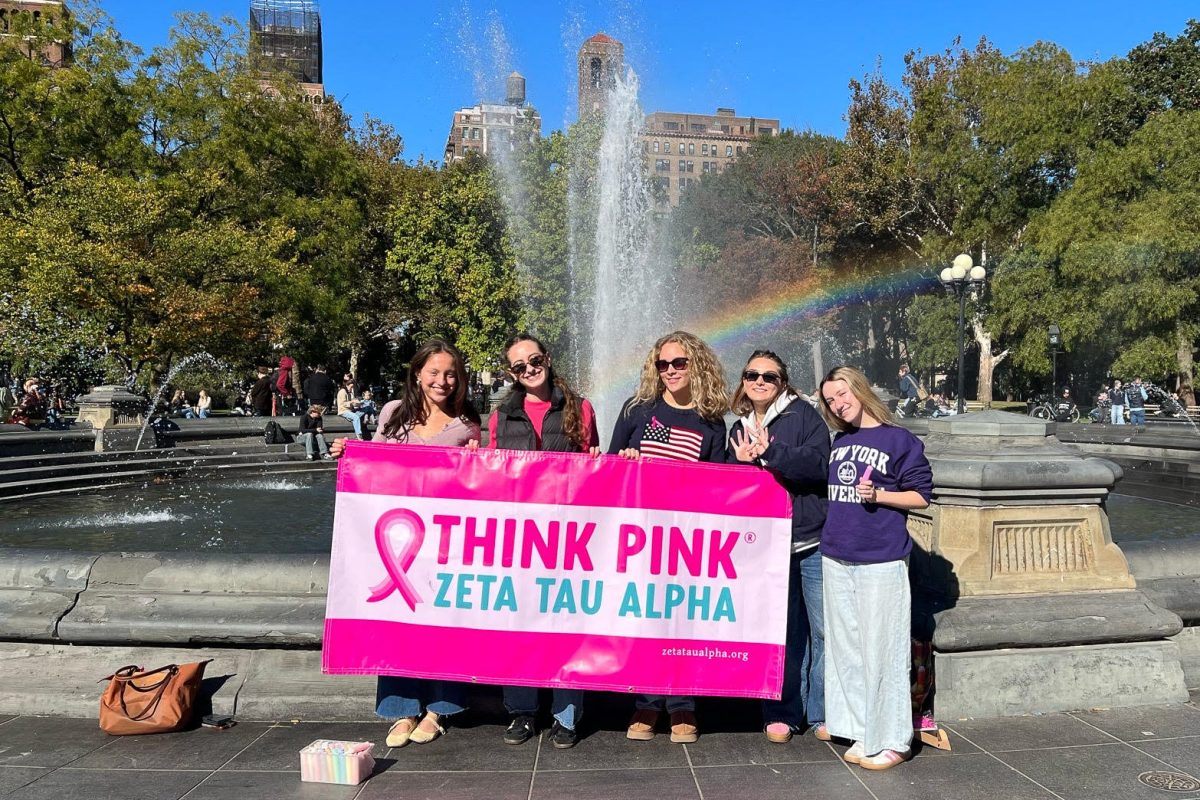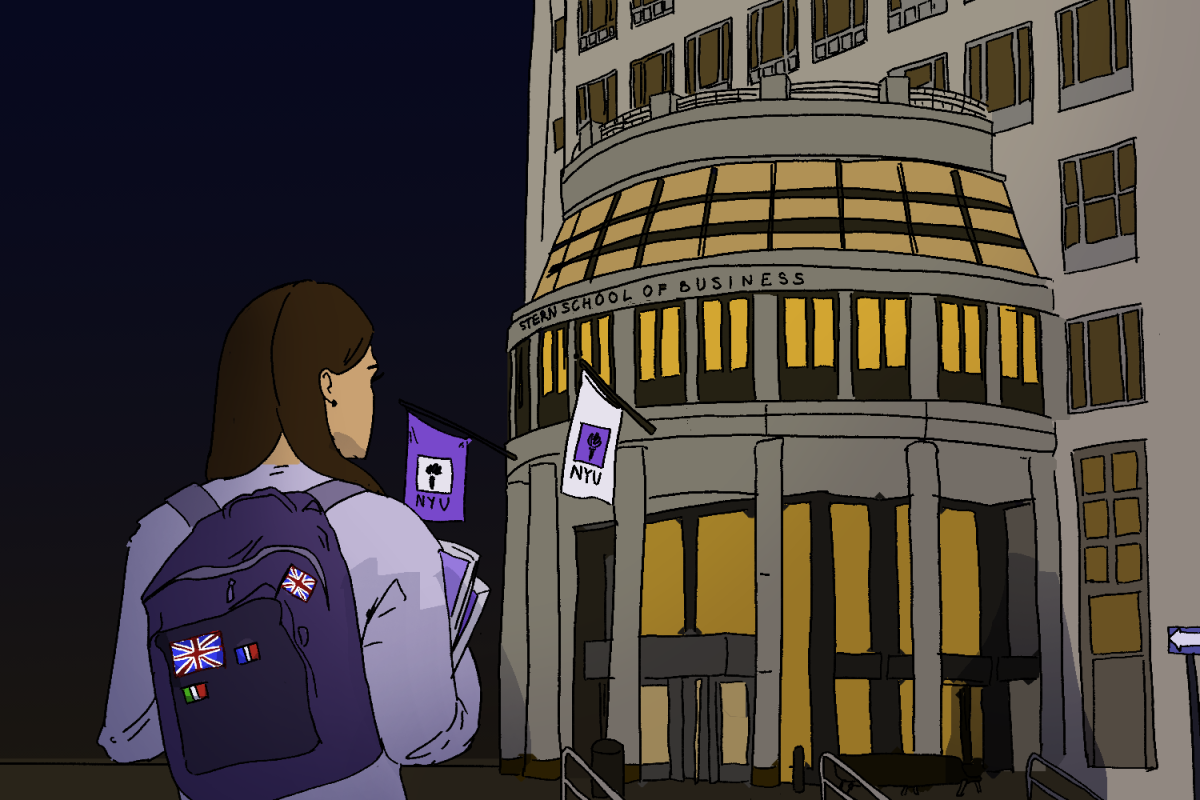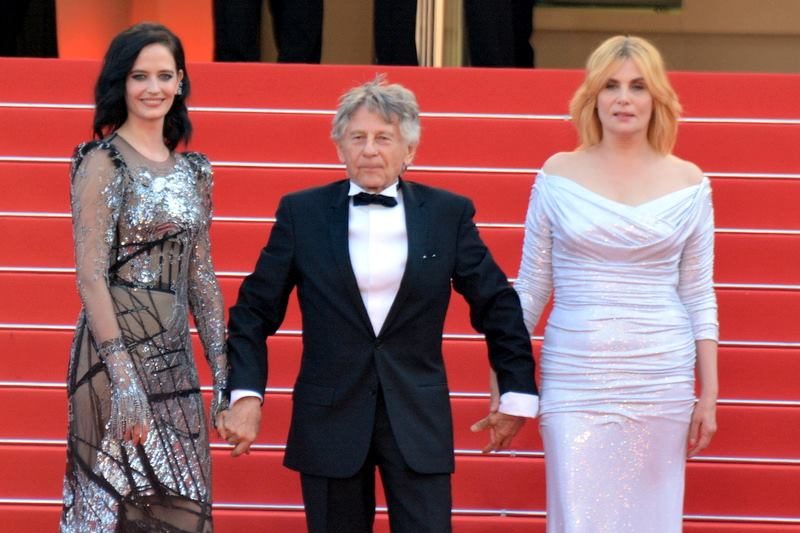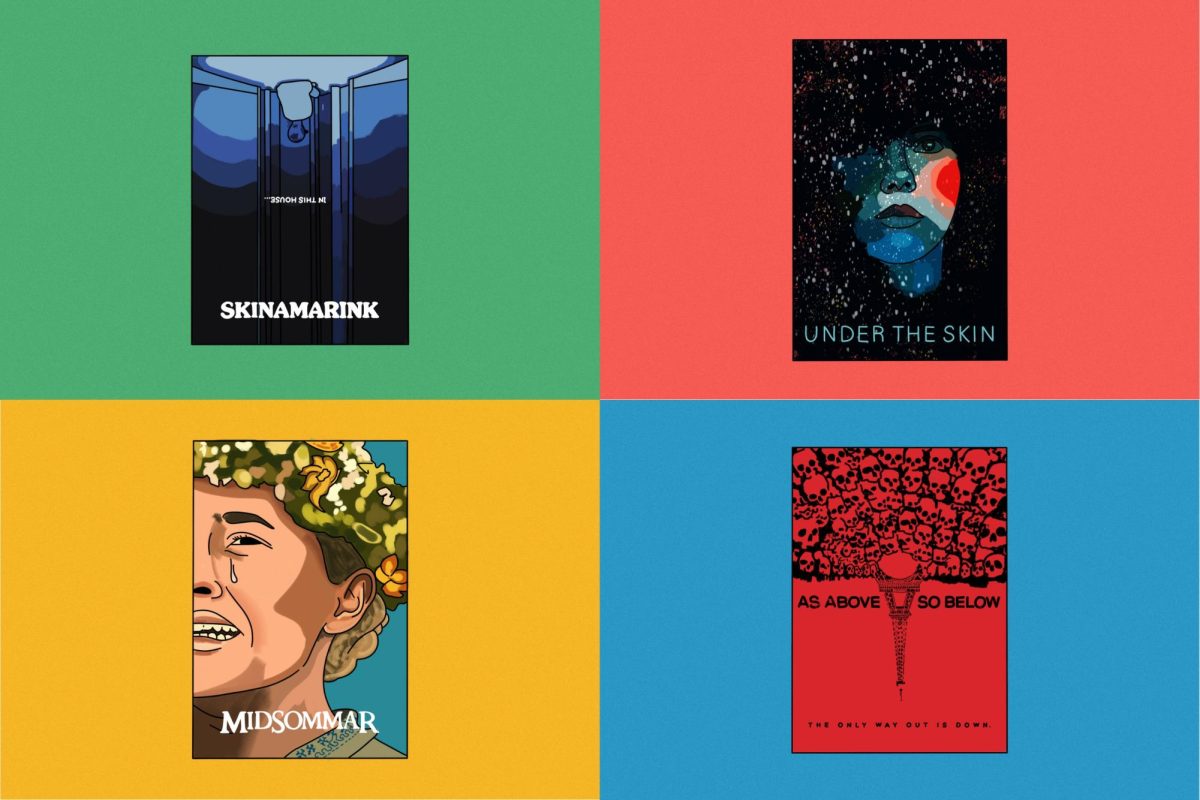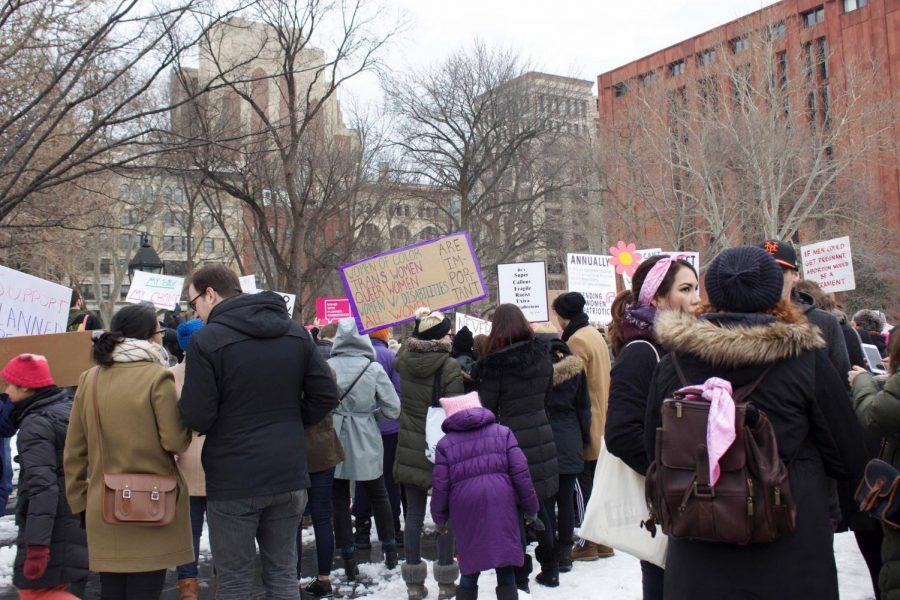A Crash Course on the Four Waves of Feminism
A pro-planned parenthood rally on Feb. 11, 2017 in Washington Square Park.
March 19, 2018
The Women’s March Movement declared that feminism must be intersectional — that is, it can’t just account for women who fall under one specific demographic. As Vox explained, intersectional feminism means to pay “attention to the ways the gender-based discrimination and oppression a woman may experience can be compounded by her race, socioeconomic status, sexual orientation and more.”
It almost seems obvious and as though it should go without saying — all men, women and gender-nonconforming people should be treated equally under feminism, right? But during the first wave of feminism, the movement wasn’t always so inclusive.
If the different waves of feminism confuse you and you don’t understand the nuances of each — or if you don’t even know which one we’re currently living in — have no fear. Here’s a handy guide to the four waves of feminism.
First Wave Feminism: 1800s to Early 1900s
The first wave of feminism is recognized to have begun with the Seneca Falls Convention in 1848, when hundreds of men and women advocated for women’s equality — specifically, for their right to vote. Pacific University professor Martha Rampton, the head of Pacific University’s Center for Gender Equity, wrote in Pacific Magazine that it also challenged the idea of the cult of domesticity and women’s limited political participation.
Major figures from the first wave included Elizabeth Cady Stanton, who wrote the Seneca Falls Declaration that detailed feminist goals, and Sojourner Truth.
Second Wave Feminism: 1960s to 1990s
According to HowStuffWorks, feminism’s second wave began with women protesting the 1968 Miss America Pageant contest. The second wave saw women fight for workplace equality, and it benefited from organizations that represented many ideologies.
The National Organization for Women formed in response to the Equal Employment Opportunity Commission — which had focused more on racial discrimination in the workplace — and it fought for gender reform to be implemented via laws. Other organizations, like New York Radical Women and the Women’s International Terrorist Conspiracy from Hell, put on public demonstrations to protest workplace sexism, according to HowStuffWorks.
This wave also targeted rape and abortion, among other so-called private issues. Second-wave feminists saw success through Roe v. Wade in 1973, in which the Supreme Court declared abortion legal. However, the movement was primarily led by middle-class white women, and many African-American women during this time were only just receiving the right to vote.
Third Wave Feminism: 1990s to 2000s
Third wave feminism is recognized as more intersectional. In her essay, Rampton said feminists tried to fight against many social constructs, including heteronormativity and ideal body types. It was also marked by more sexual liberation and Riot grrrls, those who rejected the notion of being sex objects.
“Pinkfloor expressed this new position when she said that it’s possible to have a push-up bra and a brain at the same time,” Rampton wrote.
Many third-wave feminists also avoided calling themselves feminists in order to avoid a so-called us-them construct.
“Grrrl-feminism tends to be global, multicultural and it shuns simple answers or artificial categories of identity, gender and sexuality,” Rampton wrote. “Its transversal politics means that differences such as those of ethnicity, class [and] sexual orientation … are celebrated and recognized as dynamic, situational and provisional.”
Fourth Wave Feminism: Now
The line between third and fourth wave feminism is blurry. The fourth wave still fights for many of the third wave’s causes — and, undoubtedly, some from the first two as well — but it also highlights sexual aggression against women and girls.
Major milestones for this wave were the Women’s March on Washington, the #MeToo Movement and the Time’s Up initiative.
A 2015 Bustle article by Kristen Sollee recognized the continuation of body positivity, sex positivity and LGBTQ inclusion from the third wave — though these ideals are arguable more heightened in social consciousness with the fourth wave. Sollee also pointed out the fact that the current wave pushes against misandry, or hatred against men.
“Although misandry can seem like the easiest way to combat misogyny, 4th [sic] wave feminists understand that centering queerness means embracing the myriad ways gender stereotypes, particularly masculine ones, can hurt us all,” Sollee wrote.
The fourth wave is perhaps the most significantly different in that it is digitally driven by what Sollee calls “hashtag activism,” as shown through the plethora of tweets and Facebook posts with the hashtag #MeToo that surfaced last year and still trickle on timelines today.
Read more from Washington Square News’ Intersectionality Feature here. Email Natasha Roy at [email protected].

